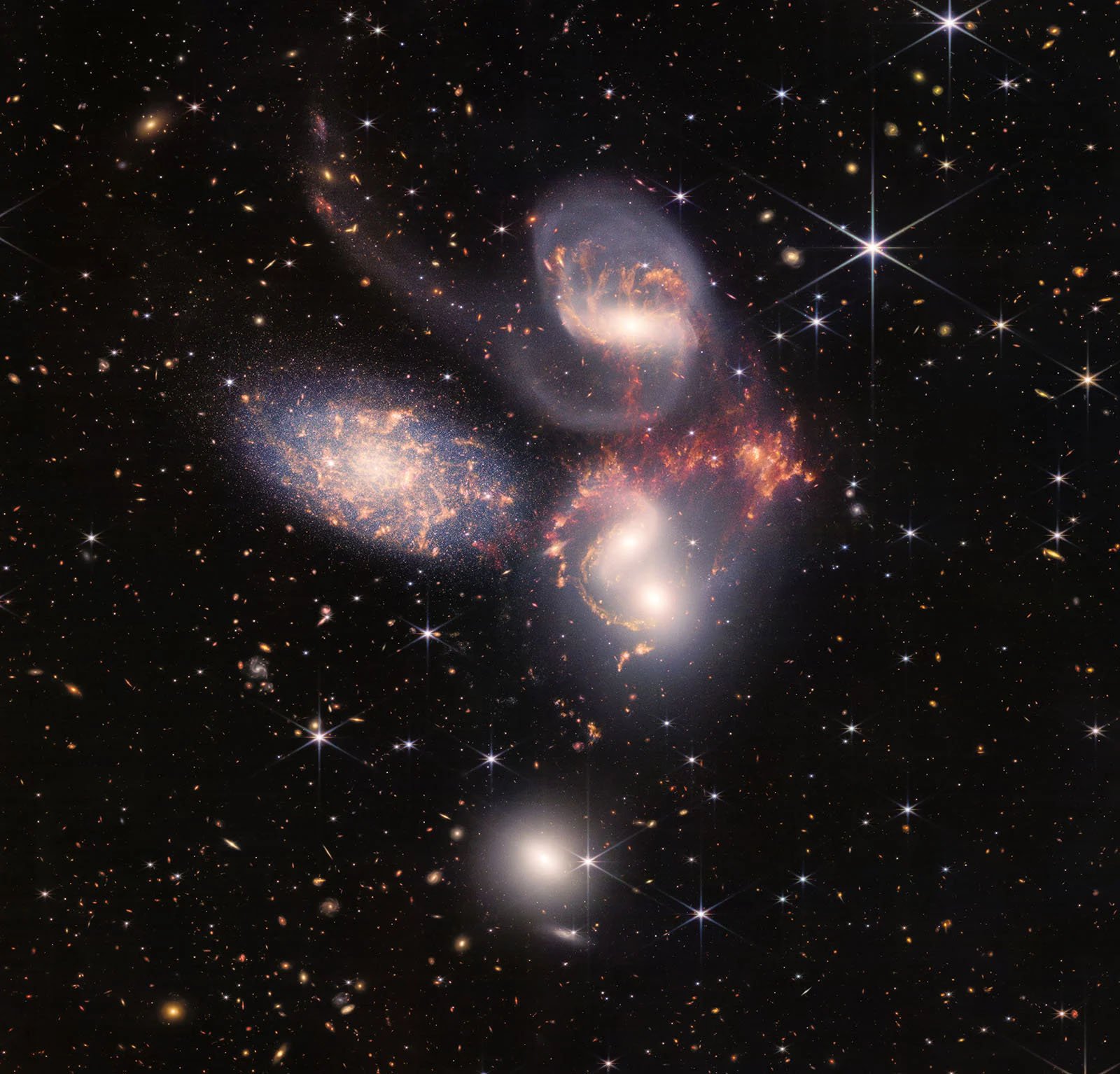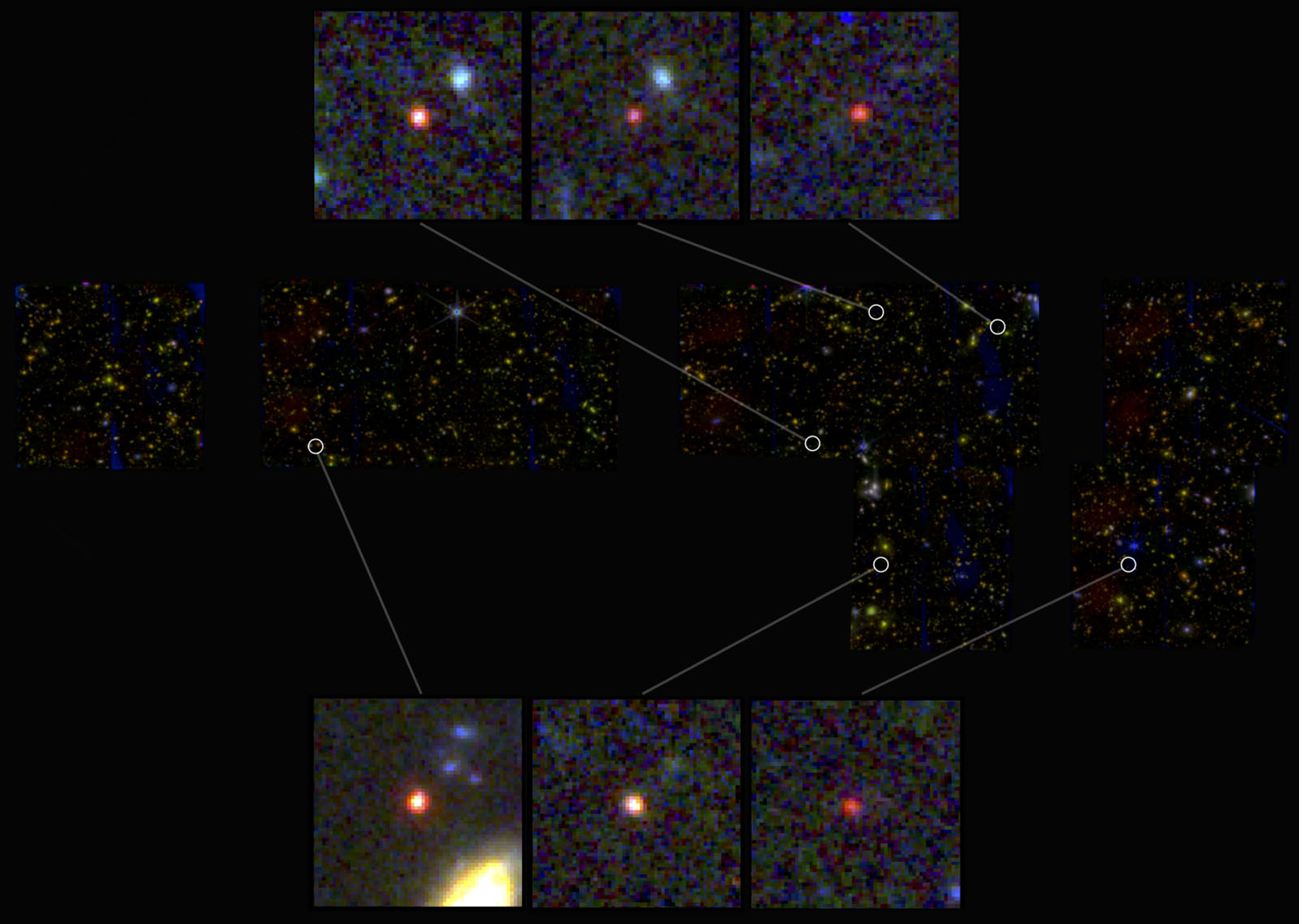Webb Can See Far Enough to Test Theories of Dark Matter

The Hubble Space Telescope (HST) upended beliefs about the fundamental nature of the Universe, delivering evidence that the Universe was not slowing down, as gravity seemingly implied it must be, but expanding. 25 years later, the James Webb Space Telescope (JWST) can help scientists make another breakthrough.
Where Hubble showed through its observations of extremely distant supernovae that the Universe was once expanding slower than it is today, demonstrating that it is not continuously slowing down, Webb is trying to show why that is.
There are numerous theories for why the Universe expands at an accelerating rate, but at the heart of the most compelling is “dark energy.” In the years since Hubble shattered beliefs, physicists have learned quite a bit about dark matter and energy, but much more remains mysterious.
Current beliefs hold that approximately 68% of the Universe is so-called dark energy and 27% is dark matter. The other 5%? That is all ordinary matter; everything that humans can observe and interact with.
Numerous theories could explain dark energy and matter and how they interact with the fabric of the Universe and everything in it, and Webb may be able to test one of the leading theories.
As Space reports, since JWST can see so far back — it has already detected a galaxy from just a few hundred million years after the Big Bang — astrophysicists can gather new data to create significantly more accurate simulations of the early Universe.
“For the past year and a half, the James Webb Space Telescope has delivered astonishing images of distant galaxies formed not long after the Big Bang, giving scientists their first glimpses of the infant universe. Now, a group of astrophysicists has upped the ante: Find the tiniest, brightest galaxies near the beginning of time itself, or scientists will have to totally rethink their theories about dark matter,” explains the University of California, Los Angeles (UCLA) in a news release.
The team, led by UCLA astrophysicists, implemented interactions between gas and dark matter in new simulations, events that have typically been ignored, and discovered that the resulting galaxies are tiny, significantly brighter, and formed more quickly than in prior simulations.
Scientists believe all galaxies are engulfed in a “vast halo of dark matter,” which was instrumental to their formation. However, dark matter is impossible to observe using optics, electricity, or magnetism. It is ultimately still hypothetical. However, dark matter interacts with gravity, so its existence can be inferred through observed effects on ordinary (observable) matter.
The “standard cosmological model” that underpins the collective understanding of galactic formation relies on dark matter in the Universe’s earliest days to attract ordinary matter toward it through gravity, enabling the formation of stars and galaxies.
However, many dark matter particles, called “cold dark matter,” are believed to move significantly slower than the speed of light, so the described accumulation process would have to occur gradually.
The small dwarf galaxies believed to be the oldest in the Universe don’t always appear as expected. Some spin too quickly, others have inexplicably low densities. Dark matter may bridge these problematic gaps between cosmological theory and real-world observations.

“But over 13 billion years ago, prior to the formation of the first galaxies, ordinary matter, consisting of hydrogen and helium gas from the Big Bang, and dark matter were moving relative to one another. The gas streamed at supersonic velocities past dense thickets of more slowly moving dark matter that should have pulled it in to form galaxies,” UCLA explains.
“Indeed, in models that do not take streaming into account, this is exactly what happens,” says Claire Williams, UCLA doctoral student and the research paper’s first author. “Gas is attracted to the gravitational pull of dark matter, forms clumps and knots so dense that hydrogen fusion can occur, and thus forms stars like our Sun.”
Williams and study co-authors are part of the Supersonic Project team, an international collaboration of astrophysicists from the United States, Italy, and Japan. UCLA physics and astronomy professor Smadar Naoz leads the team.
The Supersonic Project coalition found that if they incorporated the streaming effect of varying velocities between dark and ordinary matter into simulations of the early Universe, the gas (hydrogen and helium) ended up far from the dark matter and thus could not immediately form stars. When this accumulated gas fell back into a galaxy millions of years later, there was an explosion of star formation.
Since the galaxies in this adjusted simulation have many more young and luminous stars than ordinary small galaxies, they are relatively brighter than other galaxies.
“While the streaming suppressed star formation in the smallest galaxies, it also boosted star formation in dwarf galaxies, causing them to outshine the non-streaming patches of the universe,” Williams explains. “We predict that the Webb telescope will be able to find regions of the Universe where galaxies will be brighter, heightened by this velocity. The fact that they should be so bright might make it easier for the telescope to discover these small galaxies, which are typically extremely hard to detect only 375 million years after the Big Bang.”
By searching for bright patches of galaxies in the early Universe using Webb, scientists can test theories about dark matter.
“The discovery of patches of small, bright galaxies in the early universe would confirm that we are on the right track with the cold dark matter model because only the velocity between two kinds of matter can produce the type of galaxy we’re looking for,” says Naoz. “If dark matter does not behave like standard cold dark matter and the streaming effect isn’t present, then these bright dwarf galaxies won’t be found and we need to go back to the drawing board.”
The research is described in detail in a new research paper published in The Astrophysical Journal Letters. NASA and the National Science Foundation have supported the research.